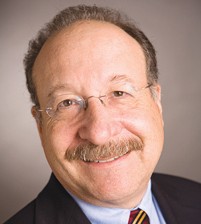Dubroff: With water districts in a cost squeeze, mergers may be the best fix
IN THIS ARTICLE
- Columns Topic
- Henry Dubroff Author
By Henry Dubroff Friday, April 10th, 2015

Henry Dubroff
There are dozens of them.
Political fiefdoms, little governments all unto their own.
And they draw little notice until money goes missing, disaster strikes or a crisis hits.
Cue the crisis music.
I’m writing about the Central Coast’s special districts, specifically the water and sanitation districts that proliferate up and down the Highway 101 corridor.
Between the governor’s drought mandates, rising pension costs and California’s new groundwater rules, these special districts are going to be in a squeeze.
And if my analysis of the situation is correct, there will be a lot fewer of them in our region in 2025 than there are today. Here’s why:
First, Gov. Jerry Brown has cleverly realized that California’s government at all levels has got to be more efficient than it is today. He dismantled cumbersome redevelopment agencies and replaced them with more streamlined incentives for job creation.
Second, many water and sanitation special districts would appear ripe for a similar restructuring. They’re small and not always well managed and could easily be merged into larger entities that are more streamlined, take better advantage of technology and manage resources as a system rather than a revenue opportunity.
Third, even before the drought came along, sanitation and water districts were prone to crisis. San Luis Obispo County has seen its share of mini-crises over sewer replacements and other issues — with special assessments that wreak havoc on homeowners’ cash flow and home values.
With the drought now in its fourth year, many water special districts are scrambling to find enough resources to keep the taps flowing. Montecito’s water district (See op-ed on Page 19) voted in a substantial surcharge that will do just that while it buys time for a bigger fix.
Some Montecito residents think that merging the water and sanitation districts or co-locating a treatment and desalinization plant on the site of the current sanitation plant could be an effective longer-term solution.
Larger jurisdictions already are looking at the unwieldy structure that manages our water and sanitary services. On April 3, Ventura County’s Grand Jury weighed in on the fact that there are 76 different entities managing water in the county with virtually no oversight from county officials, suggesting that “a joint effort could provide a more efficient and equitable process to distribute water countywide.”
There’s already been one move toward consolidation of sewer services in Ventura County. Last year, the Montalvo Community Services District voted to shut down its small treatment plant around the beginning of 2016 and connect its sewer system to the city of Ventura’s. The district, which covers about 600 properties at the south end of Ventura, plans to dissolve itself sometime in 2018.
Getting rid of the Montalvo district will save the ratepayers their money and will rid the community of a sewer plant along the Santa Clara River that’s not up to modern standards for clean water.
Even as there are moves toward consolidation, some new organizations will be required to manage scarce resources. North San Luis Obispo County will likely need a new special district to manage the groundwater in parts of Paso Robles.
Brown’s bold move to cut water use by 25 percent in cities and suburbs is really a shot across the bow of special districts to get their fiscal affairs in order or find merger partners.
From a government efficiency standpoint, that’s not a bad place to start.











